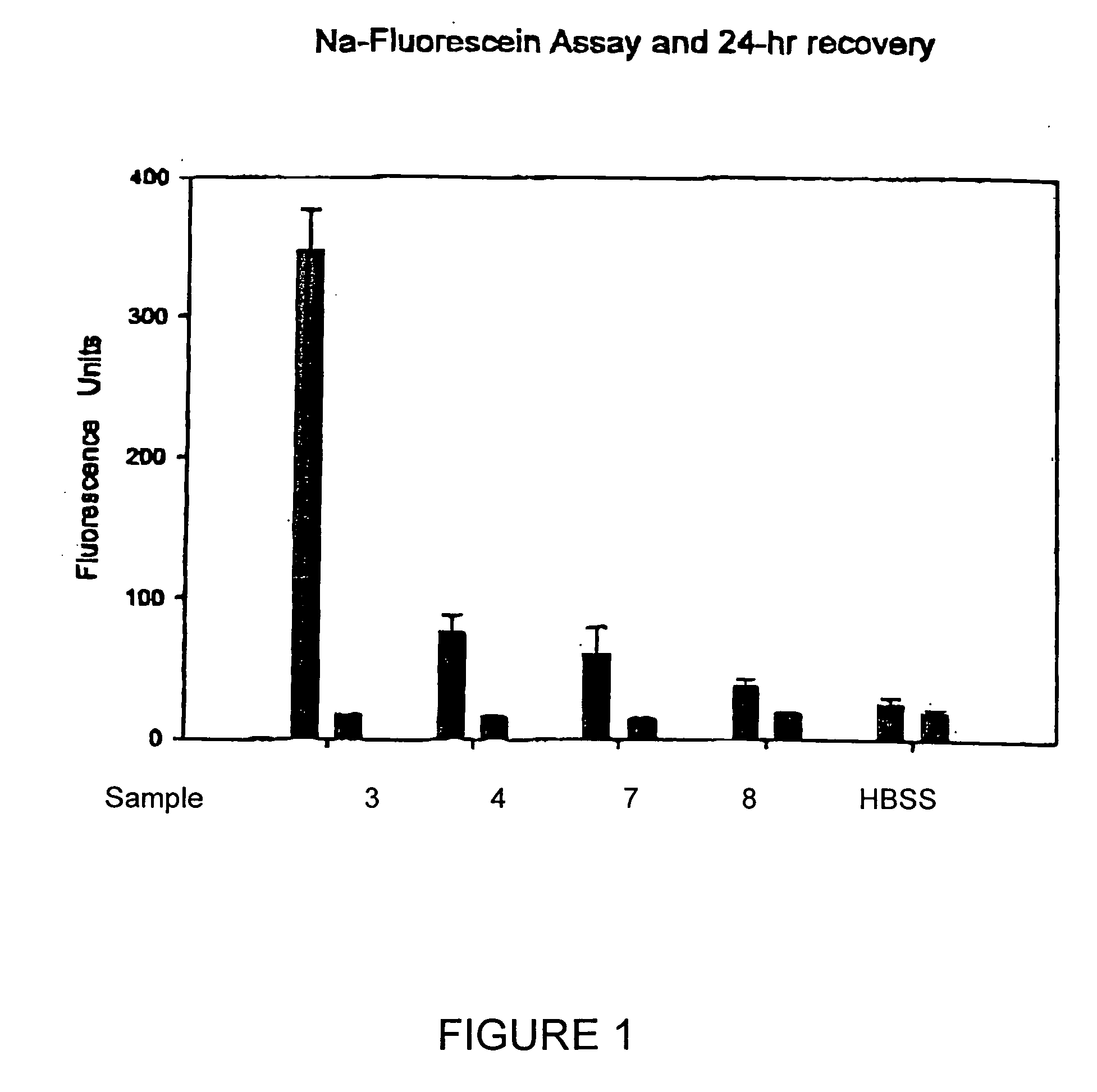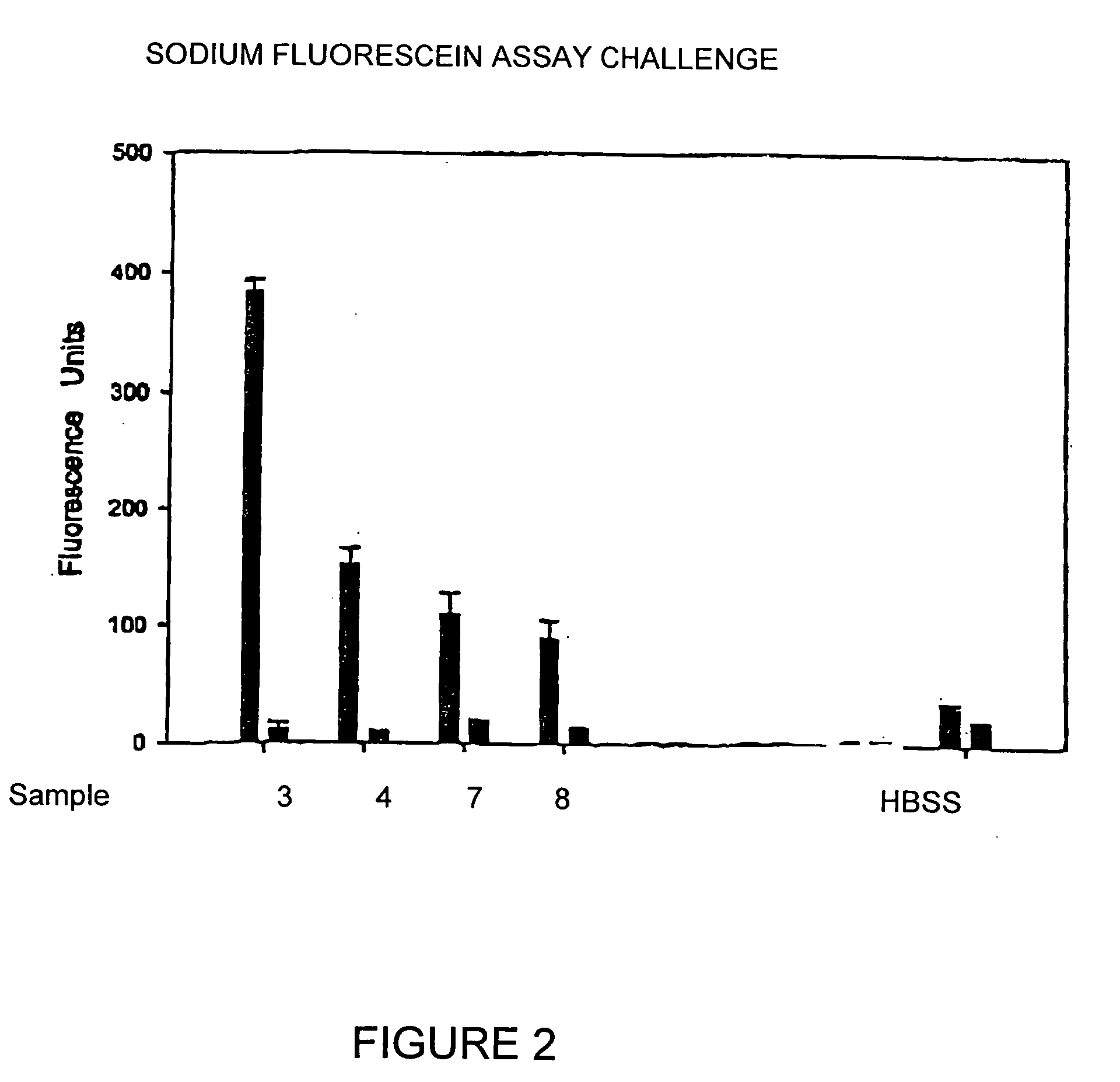Antimicrobial compositions and uses thereof
a technology of compositions and antimicrobials, applied in the field of antimicrobial compositions, can solve the problems of inability to routinely clean and disinfect contact lenses, loss of infected eye(s) if left untreated, and soiled eyes, etc., and achieve the effects of improving user compliance, rapid disinfection of contact lenses, and enhancing contact lens disinfection
- Summary
- Abstract
- Description
- Claims
- Application Information
AI Technical Summary
Benefits of technology
Problems solved by technology
Method used
Image
Examples
example 1
Preparation of Sample Test Solutions
[0027] Sample solutions for testing were prepared in accordance with formulations of the present invention set forth below in Table 1.
TABLE 1Sample Test SolutionsIngredientsTest SolutionW / W Percent1234Sodium Borate0.0900.0900.0900.090Boric Acid0.8500.8500.8500.850Sodium Chloride0.4500.4500.4500.450Tetronic 11070.5000.5000.5000.500Dimethyl Ether Amine0.1000.0500.0250.0125(R = C10)PH7.47.47.47.4Osmolality (mOsm / Kg)300300300300IngredientsTest SolutionW / W Percent5678Sodium Borate0.0900.0900.0900.090Boric Acid0.8500.8500.8500.850Sodium Chloride0.4500.4500.4500.450Tetronic 11070.5000.5000.5000.500Dimethyl Ether Amine0.1000.0500.0250.0125(R = C13)PH7.47.47.47.4Osmolality (mOsm / Kg)300300300300
example 2
Biocidal Testing of Sample Test Solutions with Five FDA / ISO Challenge Microorganisms
[0028] Test solutions prepared in accordance with Example 1 above, were each tested for ISO / FDA microbial biocidal efficacy using five FDA / ISO challenge microorganisms, i.e., three bacteria and two fungi. Primary acceptance criteria established for bacteria require that the number of viable bacteria, recovered per ml, shall be reduced by a value not less than 3.0 logs within the minimum recommended disinfection period. Primary acceptance criteria established for yeasts and molds require that the number of viable yeasts and molds, recovered per ml, shall be reduced by a value of not less than 1.0 logs within the minimum recommended disinfection time with no increase at not less than four times the minimum recommended disinfection time within an experimental error of + / −0.5 logs. Secondary acceptance criteria for bacteria requires that there is a combined log reduction for the mean values of all three...
example 3
ISO / FDA Stand-Alone Procedure for Disinfecting Products Using Five ISO / FDA Challenge Microorganisms
[0029] The ISO / FDA Stand-Alone procedure for disinfecting products using 10 percent organic soil was conducted whereby test solutions were tested against Pseudomas aeruginosa ATCC 9027, Staphylococcus aureus ATCC 6538, Serratia marcescens ATCC13880, Candida albicans ATCC 10231 and Fusarium solani ATCC 36031. Primary acceptance criteria established for bacteria require that the number of viable bacteria, recovered per ml, shall be reduced by a value not less than 3.0 logs within the minimum recommended disinfection period. Primary acceptance criteria established for yeasts and molds require that the number of viable yeasts and molds, recovered per ml, shall be reduced by a value of not less than 1.0 logs within the minimum recommended disinfection time with no increase at not less than four times the minimum recommended disinfection time within an experimental error of + / −0.5 logs. Sec...
PUM
| Property | Measurement | Unit |
|---|---|---|
| weight percent | aaaaa | aaaaa |
| weight percent | aaaaa | aaaaa |
| weight percent | aaaaa | aaaaa |
Abstract
Description
Claims
Application Information
 Login to View More
Login to View More - R&D
- Intellectual Property
- Life Sciences
- Materials
- Tech Scout
- Unparalleled Data Quality
- Higher Quality Content
- 60% Fewer Hallucinations
Browse by: Latest US Patents, China's latest patents, Technical Efficacy Thesaurus, Application Domain, Technology Topic, Popular Technical Reports.
© 2025 PatSnap. All rights reserved.Legal|Privacy policy|Modern Slavery Act Transparency Statement|Sitemap|About US| Contact US: help@patsnap.com



